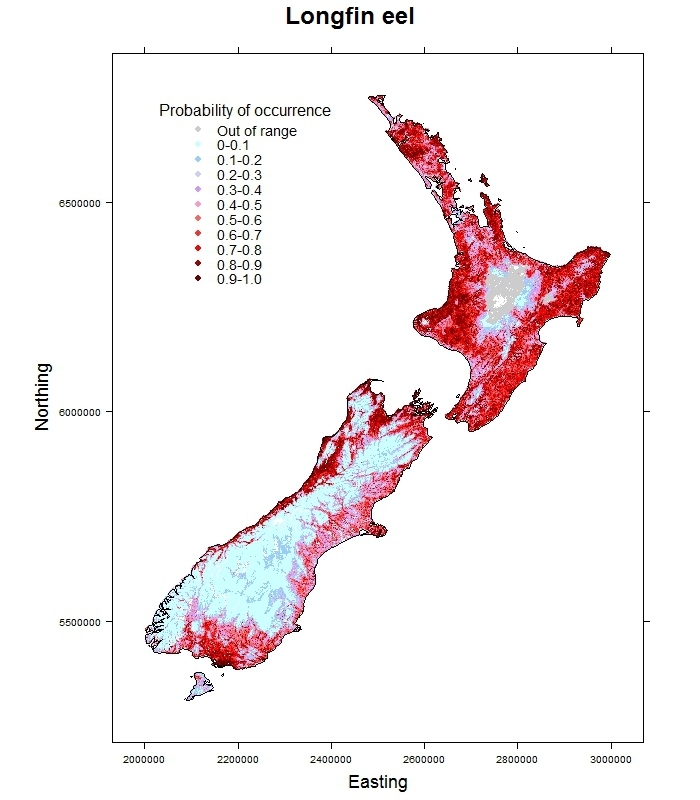Longfin eel
Anguilla dieffenbachii (Gray, 1842)

Longfin eels are distinguished from shortfin eels by the length of the dorsal fin; when viewed side-on, the dorsal fin is longer than the anal fin and extends well forward past the end of the anal fin. In shortfin eels, the dorsal and anal fin ends are almost the same length. Australian longfin eels can be distinguished from native longfins by the presence of irregular black blotches on the back and sides.
Longfin eels are only found in New Zealand and occur throughout the country. The elvers are legendary climbers and penetrate well inland in most river systems, even those with natural barriers such as steep falls. Large hydroelectric dams can also be surmounted if appropriate facilities are provided for eel passage, or if elvers are caught at the base of the dam and stocked into the waters above it. Adults can move overland from one waterbody to another (e.g. from a river to an isolated farm pond) by crossing flat grassy land, especially when it is wet. The longfin eel occupies a wide range of habitats and occurs in rivers, streams, lakes ponds and wetlands. Longfin eels are carnivores and over about 40 cm in length they feed mostly on small fish and crustacea. They are responsible for major commercial and customary fisheries in New Zealand.
Although the longfin eel is endemic and is one of our most common and largest freshwater fish, there is mounting concern at the scarcity of very large specimens which are being rapidly fished out, and longfin elvers are now becoming scarce as well. Pictures of huge eels used to appear regularly in local newspapers, but not any longer. Commercial harvesting is probably mostly to blame for the scarcity of large eels. These are generally females that contain huge numbers of eggs and are thus important in sustaining the population. So, if you catch a big longfin – put it back in the water instead of feeding it to the cat!
![Longfin eel distribution map [2024]](/sites/default/files/styles/wide/public/2024-02/Longfin%20eel.jpeg?itok=iYCahaPF)


